Famous Photos – 31 Must-See Historic Photographs
Some of the most famous photos became popular because they captured significant moments in human history. Many of the best photographs ever taken were not planned but were instead candid moments of everyday life – ranging from the beautiful to the horrific. In search of the most iconic photo, there are certain factors to keep in mind: what was the message of the iconic picture, and how did it make you feel? Of course, the most famous pictures were also aesthetically captivating – how the photographer frames a moment is just as important as the scene he is capturing.
Table of Contents
- 1 Exploring the Most Famous Photos in History
- 1.1 View from the Window at Le Gras (1827) by Joseph Nicéphore Niépce
- 1.2 The Horse in Motion (1878) by Eadweard Muybridge
- 1.3 The Steerage (1907) by Alfred Stieglitz
- 1.4 A little spinner in a Georgia Cotton Mill (1909) by Lewis Hine
- 1.5 Blind Beggar (1916) by Paul Strand
- 1.6 Man Jumping the Puddle (1930) by Henri Cartier-Bresson
- 1.7 Lunch atop a Skyscraper (1932) by Charles Clyde Ebbets
- 1.8 The Falling Soldier (1936) by Robert Capa
- 1.9 Migrant Mother (1936) by Dorothea Lange
- 1.10 The Hindenburg Disaster (1937) by Sam Shere
- 1.11 Sir Winston Churchill (1941) by Yousuf Karsh
- 1.12 The Tetons and the Snake River (1942) by Ansel Adams
- 1.13 V-J Day in Times Square (1945) by Alfred Eisenstaedt
- 1.14 Raising the Flag on Iwo Jima (1945) by Joe Rosenthal
- 1.15 Gandhi and the Spinning Wheel (1946) by Margaret Bourke
- 1.16 Dalí Atomicus (1948) by Philippe Halsman
- 1.17 Country Doctor (1948) by Eugene Smith
- 1.18 Milk Drop Coronet (1957) by Harold Edgerton
- 1.19 Guerillero Heroico (1960) by Alberto Korda
- 1.20 The Burning Monk (1963) by Malcolm Browne
- 1.21 Muhammad Ali vs Sonny Liston (1965) by Neil Leifer
- 1.22 Saigon Execution (1968) by Eddie Adams
- 1.23 Earthrise (1968) by William Anders
- 1.24 Black Power Salute (1968) by John Dominis
- 1.25 The Terror of War (1972) by Nick Ut
- 1.26 Woman Falling From Fire Escape (1975) by Stanley Forman
- 1.27 Afghan Girl (1984) by Steve Mccurry
- 1.28 Tank Man (1989) by Jeff Widener
- 1.29 Famine in Somalia (1992) by James Nachtwey
- 1.30 Starving Child and Vulture (1993) by Kevin Carter
- 1.31 Falling Man (2001) by Richard Drew
- 2 Frequently Asked Questions
DISCLAIMER: Some of the images and/or videos in this article contain content that may not be appropriate for children or sensitive persons.
Exploring the Most Famous Photos in History
Before the invention of the camera, historic or contemporary scenes could only be portrayed through paintings and sculptures. Of course, many painters would have models pose for them in planned compositions, but trying to depict a fleeting moment while everything is in real-time motion is another story.
Photography changed all of that and suddenly, significant moments in human history could be recorded accurately and quickly.
This has resulted in an abundance of famous historic photographs that allow us to look into the past and view bygone eras, thus revealing both human advancements and atrocities. What most iconic photos have in common is that they are not pre-planned or staged, but rather show us the real world as it is – through the eyes of an individual with a keen seen of drama, composition, and engaging narrative.
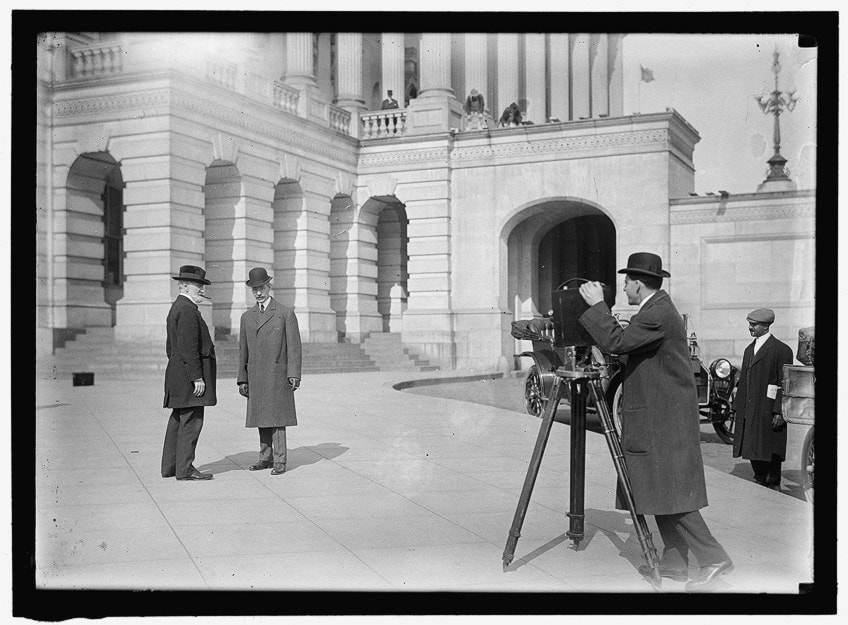
View from the Window at Le Gras (1827) by Joseph Nicéphore Niépce
| Photographer | Joseph Nicéphore Niépce (1765 – 1833) |
| Date Taken | 1827 |
| Medium | Heliograph on pewter |
| Current Location | Harry Ransom Center, Austin |
As to be expected, one of the most iconic photos is also the very first ever made. It is perhaps not the best photograph when it comes to clarity or quality – it is a very blurry image, yet, it is still one of the most important and famous historic photos. Without this iconic picture, none of the other famous pictures on this list would even have been produced!
The photographer of the image, Joseph Nicéphore Niépce, was not an artist but worked as an inventor who had a keen interest in printing technologies.
In 1826, he installed a camera obscura by the window of his studio, facing the view of buildings outside. There is only one copy of the image that was cast onto a pewter plate, produced through a process that required eight hours of light exposure – hence why there are shadows visible on both sides of the image.

The Horse in Motion (1878) by Eadweard Muybridge
| Photographer | Eadweard Muybridge (1830 – 1904) |
| Date Taken | 1878 |
| Medium | Albumen print |
| Current Location | Private Collection |
Horse enthusiasts, such as racehorse breeder Leland Stanford, thought that there were definitely occasions in a horse’s stride when all feet were in the air and the animal experienced “unsupported transit.” But he had no way of proving his idea since the speed of a horse’s movement exceeded the perception of his naked eyesight, and the camera’s shutter speeds were not yet fast enough to catch such brief snippets of time barely over 30 years after the medium’s birth.
Stanford then thought of Eadweard Muybridge, who had previously shot Stanford’s magnificent Sacramento mansion in 1872. Muybridge had been traveling the western United States photographing breathtaking sites like Yosemite Valley for his commercial photographic studio.
In 1872, he undertook work for Stanford to increase photography shutter speeds and, eventually, to help identify whether a horse’s four feet were all in the air at any moment during a gallop.
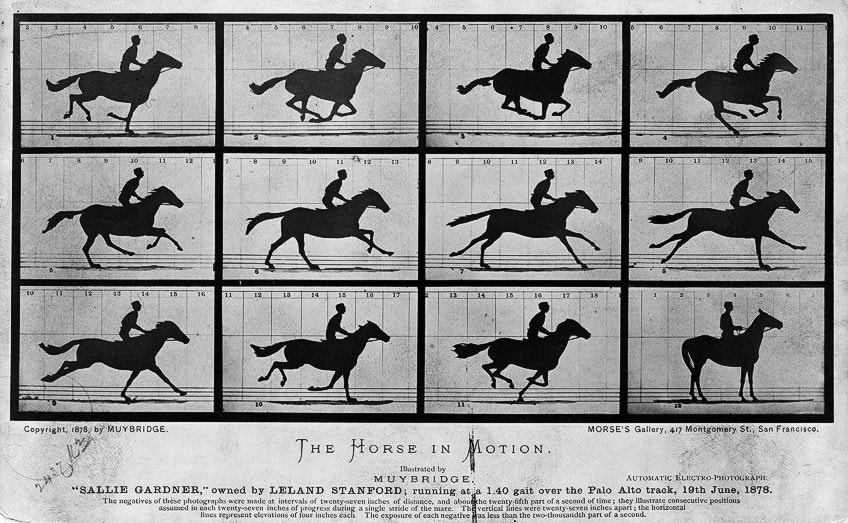
The Steerage (1907) by Alfred Stieglitz
| Photographer | Alfred Stieglitz (1864 – 1946) |
| Date Taken | 1907 |
| Medium | Photogravure |
| Current Location | Princeton University Art Museum, New York |
This image is regarded as one of the most famous historic photos because it simultaneously documented a moment in history and positioned itself as a forerunner in the art of photographic modernism. For Alfred Stieglitz, it was important that photography be viewed as a legitimate art form, and in scenes like these, there were underlying shapes and forms in the composition that appealed to him aesthetically.
The photo also captures a significant moment.
It is believed that the passengers on board were European immigrants who were being sent back to the continent as they had insufficient funds to meet the United States’ immigration requirements policies. However, some of the passengers were also craftsmen who were on their way to jobs overseas to meet the demand for skilled artisans in the then booming construction industry.
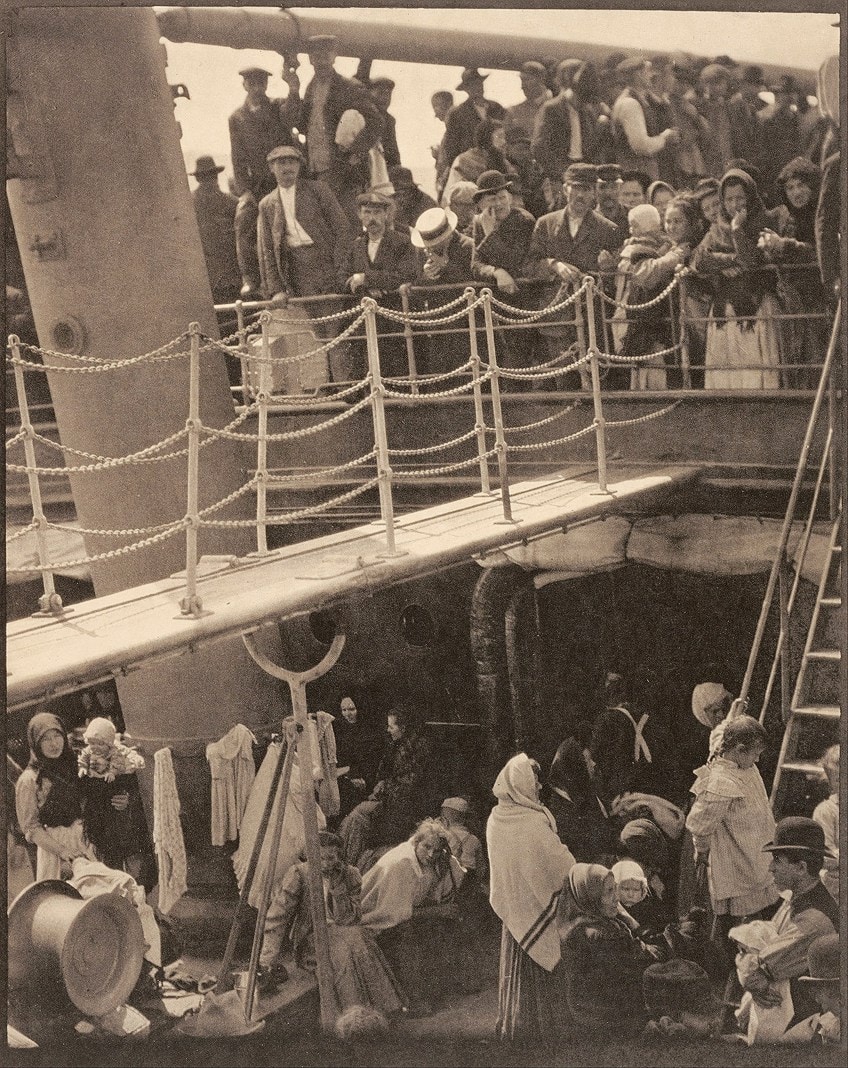
A little spinner in a Georgia Cotton Mill (1909) by Lewis Hine
| Photographer | Lewis Hine (1874 – 1940) |
| Date Taken | 1908 |
| Medium | Gelatin silver print |
| Current Location | Getty Museum, Los Angeles |
Children who had previously worked on family homesteads or did household work were forced to work in factories as a result of industrialization. Lewis Hine, a photographer, visited a cotton mill in 1908 and encountered a small girl who worked as a spinner. When Hine inquired as to her age, the girl said, “I don’t recall.” The photographs, which were published in major publications, outraged many Americans and fueled attempts to amend and reinforce labor regulations.
The change in legislation resulted in a 50% reduction in the number of underage laborers during a ten-year period.
Blind Beggar (1916) by Paul Strand
| Photographer | Paul Strand (1890 – 1976) |
| Date Taken | 1916 |
| Medium | Photogravure |
| Current Location | Museum of Modern Art, New York |
Strand created a series of spontaneous street photographs in 1916 using a handheld camera with a fake lens mounted to its side, enabling him to aim the camera in one position while capturing the shot in another. This landmark photograph of a street vendor was featured in Alfred Stieglitz’s magazine in 1917. It quickly became a symbol of new American photography, combining the humanity of social documentary with the dramatically reduced forms of modernism. The only known historic exhibit print of this photograph is this big platinum print.
Strand not only caught a point in time when a country was fast changing owing to an influx of immigrants but also pioneered a new style of street photography.

Man Jumping the Puddle (1930) by Henri Cartier-Bresson
| Photographer | Henri Cartier-Bresson (1908 – 2004) |
| Date Taken | 1930 |
| Medium | Gelatin silver print |
| Current Location | The Museum of Modern Art, New York |
This iconic picture of a man jumping over a puddle represents a significant milestone in photography: the concept of the “decisive moment” – the exact moment that a photographer decides to frame a scene. The 1930s were a time of great advancements in technology and life became progressively more fast-paced. The photo was taken at a train station which in itself is a representation of the advances in transportation – everything was about progress and speed.
Thanks to advances in camera technology at the time, spontaneous moments like these could be captured without the image coming out too blurry and indistinct.
Lunch atop a Skyscraper (1932) by Charles Clyde Ebbets
| Photographer | Charles Clyde Ebbets (1903 – 1990) |
| Date Taken | 1932 |
| Medium | Black and white photograph |
| Current Location | Palacio de Bellas Artes, Mexico City |
This is a 1932 black-and-white image depicting 11 iron construction workers perched on a support beam 260 meters above the earth on the 69th floor of Manhattan’s RCA Building. It was set up as a PR gimmick as part of a push to promote the skyscraper. During the building of Rockefeller Center in October 1932, the image was first released to the public.
The photographer’s name is disputed; the image is sometimes mistakenly attributed to Lewis Hine.
Although evidence suggested that it was taken by Charles Clyde Ebbets, it was later discovered that other photographers were present during the shoot as well. Many speculations have been made about the identity of the guys in the photograph, but only a handful have been proven.

The Falling Soldier (1936) by Robert Capa
| Photographer | Robert Capa (1913 – 1954) |
| Date Taken | 1936 |
| Medium | Gelatin silver print |
| Current Location | Metropolitan Museum of Art |
Capa photographed a Spanish soldier being shot without ever glancing through his camera. This shot, captured by raising his camera over his head while standing in the trenches, raised combat photography to a new level. Journalists were soon formally incorporated into armed formations as their usefulness in recording and reporting war atrocities became clear. Because of machine gun fire, the man was uneasy and anxious as he climbed over the sandbags and dropped back into the trench. Robert Capa followed him and took the picture during his last attempt.
Robert Capa had to wait several long hours with the corpse before escaping the trenches in the dark.
Migrant Mother (1936) by Dorothea Lange
| Photographer | Dorothea Lange (1895 – 1965) |
| Date Taken | 1936 |
| Medium | Gelatin silver print |
| Current Location | Museum of Modern Art, New York |
This image is regarded as one of the most famous photos in American history. A woman in tattered clothes carries a baby while two toddlers gather close behind her shoulders, hiding their faces. The mother, whose name is Florence Owens Thompson, stares into the distance, one hand raised to her mouth, and concern engraved deep in her wrinkles. The photograph became a symbol of the poverty, hunger, and hopelessness faced by so many people during the Great Depression from the moment it was originally featured in the newspapers in 1936. Dorothea Lange had taken the image, along with a number of others, days before at a farm workers’ camp.
Despite the fact that her image was extensively published and reprinted on everything from covers of magazines to stamps, the woman in the photograph was never found again or identified.

The Hindenburg Disaster (1937) by Sam Shere
| Photographer | Sam Shere (1905 – 1982) |
| Date Taken | 1937 |
| Medium | Gelatin silver print |
| Current Location | Metropolitan Museum of Modern Art |
Around 22 photographers were assembled as part of a big PR push by the Hindenburg’s parent corporation in Germany for the arrival of the Hindenburg, the biggest airplane ever built. This exposure, however, backfired when the zeppelin caught fire and crashed. The event received extensive coverage in the photographic, film, and radio media. It was one of the most significant tragedies covered by the fledgling non-print media.
Despite the fact that many comparable images of the accident were taken, Sam Shere’s photo is described as one of the most famous photos ever taken.
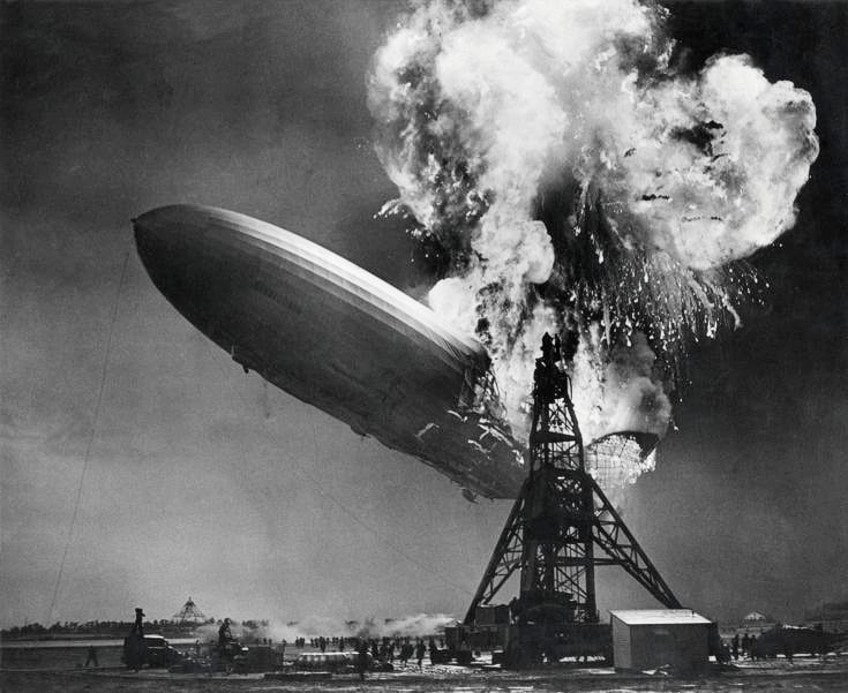
Sir Winston Churchill (1941) by Yousuf Karsh
| Photographer | Yousuf Karsh (1908 – 2002) |
| Date Taken | 1941 |
| Medium | Black and white photograph |
| Current Location | Parliament Hill, Ottawa, Ontario |
In 1941, Churchill traveled to Ottawa to give his thanks to the allies for their assistance in the attack on Pearl Harbor. Apparently, Churchill was not aware that a portrait shoot had been organized, yet begrudgingly agreed.
However, when the photographer requested that he remove his cigar, as the smoke would interfere with the photo, Churchill refused.
Just before the photo was taken, the photographer ran up and snatched the cigar from Churchill’s mouth, causing him to scowl at the photographer 0 hence the angry expression on his face. After the photo was taken, Churchill remarked that the photographer was even able to force a “roaring lion to remain still for a photograph”.
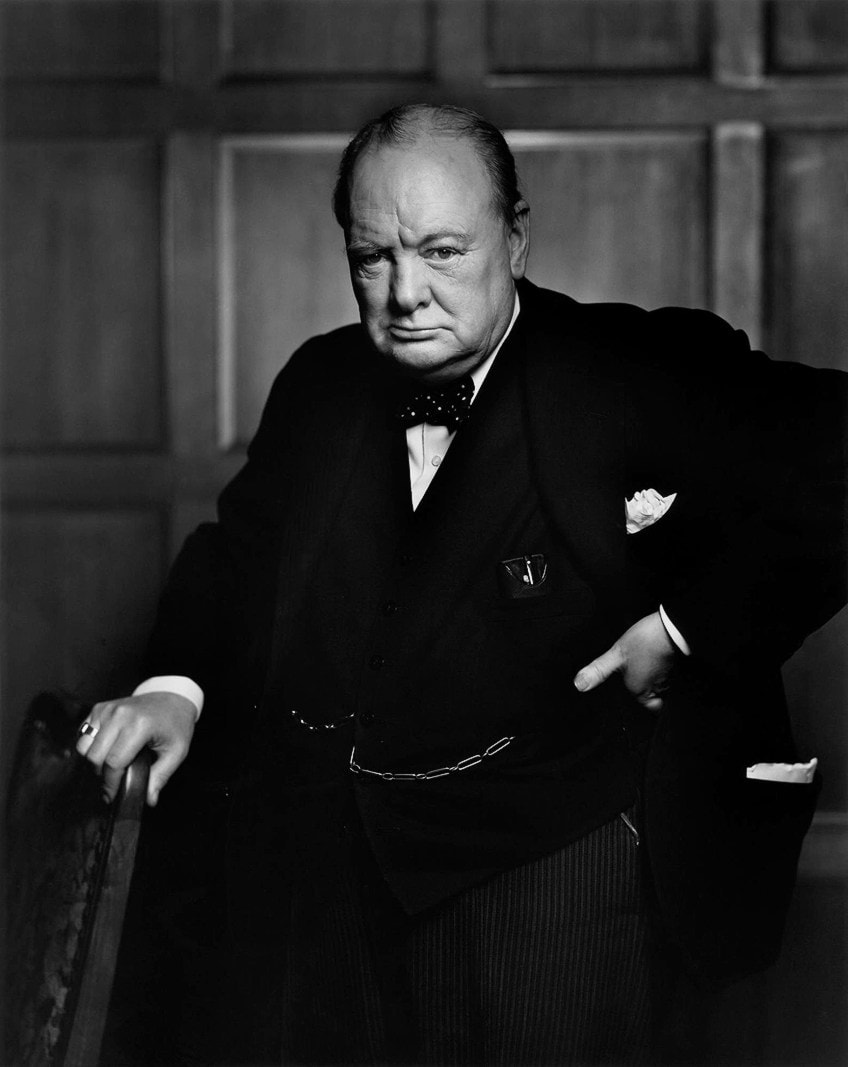
The Tetons and the Snake River (1942) by Ansel Adams
| Photographer | Ansel Adams (1902-1984) |
| Date Taken | 1942 |
| Medium | Gelatin silver print |
| Current Location | Multiple prints |
Ansel Adams was one of the first true nature photographers, and this photograph of the snake river is one of his most famous images. It sparks in all of us a curiosity to explore the world around us. Presenting a stunning mountain vista and the winding river through them, this is truly a wonderful photograph.
This critically acclaimed photo is said to have started our love of photographing nature.

V-J Day in Times Square (1945) by Alfred Eisenstaedt
| Photographer | Alfred Eisenstaedt (1898 – 1995) |
| Date Taken | 1945 |
| Medium | Gelatin silver print |
| Current Location | Multiple prints |
In 1945, shortly after Japan’s defeat was declared, photographer Alfred Eisenstaedt captured a sailor embracing a nurse in New York City’s Times Square. Life magazine published it a couple of weeks later, along with additional images from that day’s celebrations. Eisenstaedt had observed the sailor embracing every female he approached, but he watched until the sailor snatched the nurse as her white uniform against his black suit provided the visual and emotional effect he was looking for.
The incident is recreated with hundreds of people in Times Square on a regular basis, and hundreds of seamen and nurses have claimed to be Eisenstaedt’s subjects, some more convincingly than others.
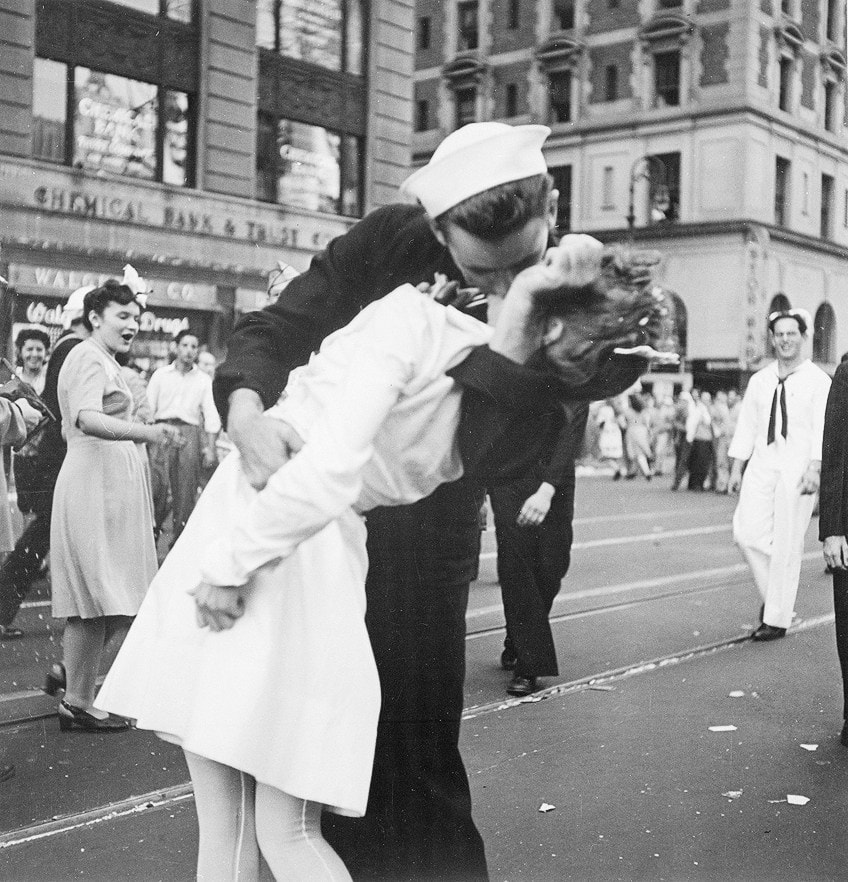
Raising the Flag on Iwo Jima (1945) by Joe Rosenthal
| Photographer | Joe Rosenthal |
| Date Taken | 1945 |
| Medium | Gelatin silver print |
| Current Location | Multiple prints |
The flag-raising picture shows six marines raising the American flag during the Iwo Jima battle. The photograph won the Pulitzer Prize in the same year. This picture is a point of national pride and patriotism in America and is still held today as a representation of an important point in history.
It is one of those images that photojournalists specifically look to capture.
Gandhi and the Spinning Wheel (1946) by Margaret Bourke
| Photographer | Margaret Bourke (1904 – 1971) |
| Date Taken | 1946 |
| Medium | Gelatin silver print |
| Current Location | Multiple prints |
Margaret Bourke was renowned for being the first female photographer to be employed by LIFE magazine. She was given an incredibly rare opportunity to photograph Gandhi. However, upon her arrival, she quickly discovered that there were several requirements that had to be met before she would be allowed to take his photograph. First, she herself would have to learn how the spinning wheel works. Secondly, she was not to talk to Gandhi as it was a day of silence.
The last requirement was that she would only be able to take three photographs, as Gandhi hated bright lights, and each photo required the utilization of bright bulbs. Luckily for the photographer, she managed to capture this image by the third and final shot.
Dalí Atomicus (1948) by Philippe Halsman
| Photographer | Philippe Halsman (1906 – 1979) |
| Date Taken | 1948 |
| Medium | Gelatin silver print |
| Current Location | Museum of Modern Art, New York |
Philippe Halsman dedicated his life to capturing the soul of persons he photographed. Knowing that a typical portrait of the colorful Salvador Dalí would not do, he set out to produce something remarkable. Halsman even enlisted the help of his wife and children to toss the cats and water into the picture.
They eventually obtained this image, which has echoes of Dalí’s own work, after 26 shots.
Because it was all film, everything had to be produced in a single frame; there was no such thing as Photoshop! Both individuals had a unique sense of style and originality – some may even say strange. They worked together on various projects, including Halsman’s recreation of one of Dalí’s paintings of a skull using real nude bodies.

Country Doctor (1948) by Eugene Smith
| Photographer | Eugene Smith (1918 – 1978) |
| Date Taken | 1948 |
| Medium | Gelatin silver print |
| Current Location | Published in LIFE magazine (1948) |
Smith’s goal was to view reality through the eyes of his subjects and to inspire audiences to do the same. This photograph is from his photo series “Country Doctor,” which was captured after Smith had spent 23 days with the doctor. He was able to convey the spirit of his subject in a single photo after following the doctor and becoming acquainted with him. This photograph and accompanying article established a model for the form, which many have subsequently imitated.
However, the iconic picture was part of a larger photo essay that set a new benchmark for the type of photography known as photojournalism.
Milk Drop Coronet (1957) by Harold Edgerton
| Photographer | Harold Edgerton (1903 – 1990) |
| Date Taken | 1957 |
| Medium | Dye imbibition print |
| Current Location | Smithsonian American Art Museum |
Edgerton, an electrical engineering professor at MIT, undertook a series of tests in his lab, producing a camera capable of photographing a fleeting instant in the dark. Integrating high-tech strobe lights and a camera shutter allowed the photographer to catch an undetectable moment. He placed a milk pipette next to a timer and his camera.
His stop-motion shot captured the impression of a drop of milk on a table, solidifying photography’s relevance in furthering human comprehension of our physical environment.
The public was captivated by Edgerton’s images of everyday items frozen in tiny periods imperceptible to the naked human sight, and they were often included in LIFE magazine’s recurring feature. Today, it is regarded as one of the most famous pictures when it comes to technological breakthroughs.
Guerillero Heroico (1960) by Alberto Korda
| Photographer | Alberto Korda (1928 – 2001) |
| Date Taken | 1960 |
| Medium | Gelatin silver print |
| Current Location | Multiple prints |
The photograph was shot in Havana in 1960, at a memorial ceremony for casualties of a weapons boat explosion the previous day in Havana Harbor. At the time, Che Guevara was 31 years of age. The original shot had another man positioned on the left and a palm tree on the right-hand side, but they were cropped out as the image spread throughout the world.
The image has been printed, painted, silk-screened, or drawn on practically every surface conceivable, prompting the Victoria and Albert Museum to claim that it has been replicated more than any other picture in the history of photography.
Therefore, many people regard it as the world’s most iconic photograph. It is still prominent in Cuban society and across the world today.
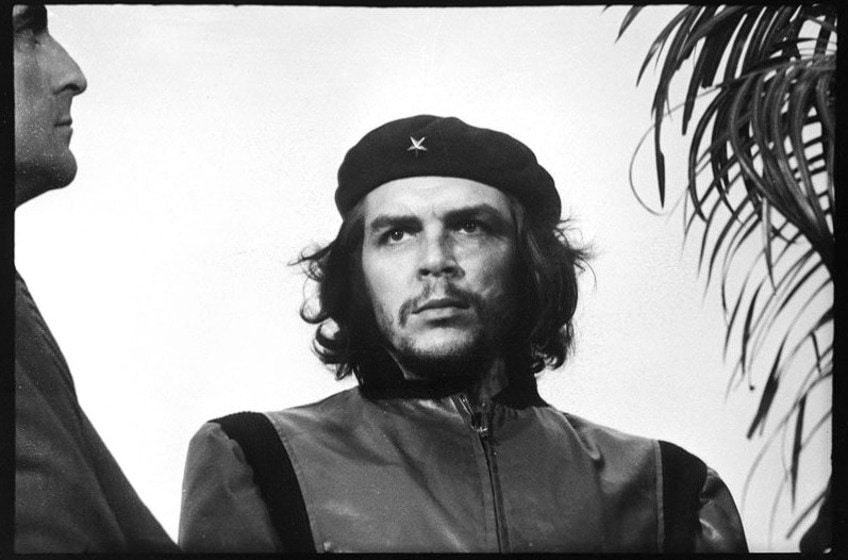
The Burning Monk (1963) by Malcolm Browne
| Photographer | Malcolm Browne (1931 – 2012) |
| Date Taken | 1963 |
| Medium | Black and white photograph |
| Current Location | Multiple prints |
Malcolm Browne captured a famous shot of a Buddhist monk called Thich Quang Duc from Vietnam setting himself alight which led to his death in 1963. The monk committed suicide in protest of the South Vietnamese Roman Catholic government’s oppression of Buddhists in the region. When the images were splashed on the front covers of newspapers throughout the world, they generated quite a controversy. “No news image in history has created so much passion throughout the globe as that one,” the US President stated of the picture.
The self-immolation was ultimately viewed as a turning moment in the Buddhist issue and a pivotal milestone in the Diem regime’s demise in 1963.
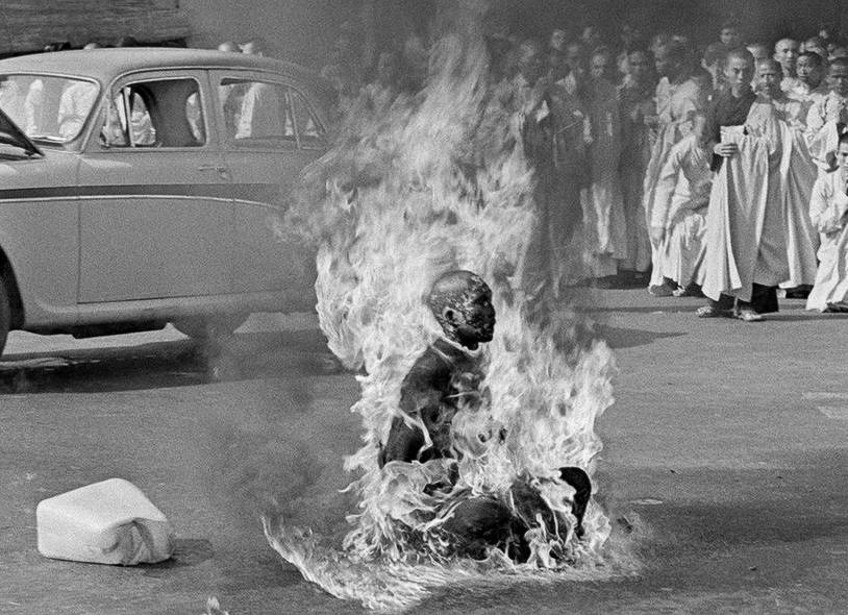
Muhammad Ali vs Sonny Liston (1965) by Neil Leifer
| Photographer | Neil Leifer |
| Date Taken | 1965 |
| Medium | Color Photograph |
| Current Location | Multiple prints |
Second, only to the fame of Muhammad Ali is the fame of this iconic photograph. The image captures the reaction of the famous boxer after the infamous first-round knockout of his competitor. The sheer triumph and adrenaline in this photograph is perhaps one of the reasons why this image is so famous.
Additionally, this photograph is famous because of how famous the event itself was.
Saigon Execution (1968) by Eddie Adams
| Photographer | Eddie Adams (1933 – 2004) |
| Date Taken | 1968 |
| Medium | Black and white photograph |
| Current Location | Multiple prints |
As with many famous historic photographs, it is not always clear what the truth is to the story that accompanies it. In 1968, photojournalist Eddie Adams was in Saigon, taking photos of the war that was occurring in the region.
The person being executed at gunpoint in the photo is Nguyễn Văn Lém, a man who was said to be a member of the Vietcong, a group that fought against The United States and Southern Vietnam in the Vietnam War.
When he was captured by the soldiers of the Southern Vietnamese army, he was instantly executed and was said to be responsible for the death of a colonel and his wife, children, and grandmother. However, many believe this was just a propaganda narrative made up after the image was taken.
Earthrise (1968) by William Anders
| Photographer | William Anders |
| Date Taken | 1968 |
| Medium | Color photograph |
| Current Location | Multiple prints |
This was hardly the first time we have seen our planet from space. Lunar probes have returned photographs of a crescent Earth cloaked in cloud. The globe is blue and white, with the exception of a little brown region in equatorial Africa.
It appears to have the luster of blue-veined marble at first look. When you look closer, the spherical perfection fades a little.
Earth reveals its actual nature as a marine and atmospheric body, both warmly welcome and painfully vulnerable. This shot is now almost 50 years old. Bill Anders captured it on Christmas Eve 1968 when the rocket approached the dark side of the moon for the fourth time. When the Earth appeared over the horizon, Anders grabbed his Hasselblad camera and began snapping.

Black Power Salute (1968) by John Dominis
| Photographer | John Dominis |
| Date Taken | 1968 |
| Medium | Color Photograph |
| Current Location | National Gallery of Art, Washington DC |
Many of the photos on this list are famous because of the influence and momentum they provided to the social movements of the day. The same is true for this iconic image. The picture of a moment of silent protest at the Olympic games added fuel to the fire of the Black Power movement.
The influence of this image is visible today in the ongoing protests at sporting events against the brutality and racism in today’s society.
The Terror of War (1972) by Nick Ut
| Photographer | Nick Ut (1951 – Present) |
| Date Taken | 1972 |
| Medium | Black and white photo |
| Current Location | National Gallery of Art, Washington DC |
Nick Ut, a war photojournalist, was taking photos just northwest of Saigon when he captured on of the most horrifying images in Vietnam War history. The faces of individuals who suffer as a result of war’s effects are rarely seen. However, the heartbreaking sight of Phan Thi Kim Phuc, caused the world to witness what was going on. She was a victim of accidentally thrown napalm and was subsequently assisted by Ut and provided with lifesaving care.
Many tabloids had to loosen their nudity standards at the time of publishing in 1972, and the image is still polarizing to the present day.
Woman Falling From Fire Escape (1975) by Stanley Forman
| Photographer | Stanley Forman (1945 – Present) |
| Date Taken | 1975 |
| Medium | Monochrome photograph |
| Current Location | Multiple prints |
At the time that this iconic picture was taken, Stanley Forman was already a renowned photojournalist who worked for the Boston Herald newspaper. He had sent to take photos at the scene of a fire, where firemen were busy trying to rescue a mother and child who were trying to descend the fire escape stairway. Unfortunately, the railing collapsed and the woman plummeted to her death. Forman kept taking photos as the railing collapsed and stopped as he realized that she was falling to her inevitable death.
Although the image won a Pulitzer Prize for best photograph in journalism, it did cause questions to be raised as to whether it was ethical to shoot – and publish – such disturbing imagery.
Afghan Girl (1984) by Steve Mccurry
| Photographer | Steve Mccurry |
| Date Taken | 1984 |
| Medium | Color photograph |
| Current Location | Multiple prints |
This image is probably the most famous national geographic photograph, and we are sure that you have seen it before. Appearing on the cover of National Geographic in 1985, this photograph captures the face of a young refugee.
The photograph is heartbreaking and is certainly one of the most famous photographs of all time.
Tank Man (1989) by Jeff Widener
| Photographer | Jeff Widener |
| Date Taken | 1989 |
| Medium | Color photograph |
| Current Location | Multiple prints |
This famous photograph is perhaps one of the most influential photographs of the twentieth century. Just like the man pictured, this image represents the humane stand against the violence of war. It is said that the photographer was first annoyed by the man entering his frame in Tiananmen Square.
The man, did not, in fact, disrupt his photograph but made it one of the most famous images in history.
Famine in Somalia (1992) by James Nachtwey
| Photographer | James Nachtwey |
| Date Taken | 1992 |
| Medium | Color photograph |
| Current Location | Multiple prints |
The famine of Somalia, which killed more than 200,000 people, was caused by regional droughts and civil strife. While a huge area of eastern Africa was afflicted by the drought during this time period, Somalia was the only vulnerable area that was simultaneously at war. James Nachtwey, a photojournalist, chose to go alone to chronicle the 1992 famine in Somalia after failing to acquire an assignment.
Nachtwey caught the horrors of hunger while being supported on the field by the Red Cross.
His most disturbing photograph depicts a woman in a wheelbarrow ready to be transported to a feeding facility. Thanks to these images, the Red Cross received a huge amount of support from the public and was, therefore, able to help save more than 1.5 million people in the region.
Starving Child and Vulture (1993) by Kevin Carter
| Photographer | Kevin Carter (1960 – 1994) |
| Date Taken | 1993 |
| Medium | Color photograph |
| Current Location | Multiple prints |
Similar to Stanley Forman’s controversial photo of a woman falling to her death, this photo was also a Pulitzer Prize winner – and also the subject of heated ethical debates. Kevin Carter, a photojournalist from South Africa traveled to Sudan to take photos of the scenes of famine in 1993. The infamous image depicts a highly malnourished child collapsed on the ground, while a vulture lurks close by. It was not only the subject matter that caused considerable outrage from the public, but also because the photographer chose to take photos of the starving little girl instead of doing anything to help her.
No matter our opinion on the subject, it is still regarded as one of the most famous historic photos of our time.
Falling Man (2001) by Richard Drew
| Photographer | Richard Drew (1946 – Present) |
| Date Taken | 2001 |
| Medium | Color photograph |
| Current Location | Multiple prints |
During the attacks on the 11th of September in New York City, Richard Drew captured this shot of a man falling from the World Trade Center. The man in the photos is unnamed, and it is unknown if he fell while looking for safety or leaped to escape the flames and smoke. Following its appearance in worldwide media on the 12th of September, 2001, the photograph was heavily condemned, with readers describing it as “distressing, cold-blooded, and cruel.” Nevertheless, since its creation, the photograph has been lauded as a “touching piece of art” and a “masterpiece in photography”.
Some believe that at least 200 persons fell or leaped to their deaths among the 2,606 victims who perished in the attack.
As we have discovered today, the most famous photos ever taken in our history are not always the most pleasant to look at. Instead, they enable us to witness history unfold before our eyes, in all its ugliness and glory. From the first iconic picture ever taken, through years of war and space travel, photographers have been there to document it all.
Take a look at our famous photographs webstory here!
Frequently Asked Questions
Why Are Some Photos Regarded as Famous Pictures?
Millions of photographs have been taken over the years, so why are some more important and well-known than others? Some of the most iconic photos depict significant moments in human history. Sometimes these moments involve historical breakthroughs and advances, whereas other times they reveal the darker side of humanity. Photographs are also famous if those who are photographed are famous. This is true for pictures of John Lennon, Annie Lebovitz, Barack Obama, and Yoko Ono.
Where Are the Most Famous Historic Photographs Kept?
Many of the most famous pictures of history can be found in museums around the world. Many of the best photographs were taken by photojournalists in the field. Since they were sent there by various newspapers, these iconic pictures most often first appeared in newspapers.
Jordan Anthony is a film photographer, curator, and arts writer based in Cape Town, South Africa. Anthony schooled in Durban and graduated from the University of the Witwatersrand, Johannesburg, with a Bachelor of Art in Fine Arts. During her studies, she explored additional electives in archaeology and psychology, while focusing on themes such as healing, identity, dreams, and intuitive creation in her Contemporary art practice. She has since worked and collaborated with various professionals in the local art industry, including the KZNSA Gallery in Durban (with Strauss & Co.), Turbine Art Fair (via overheard in the gallery), and the Wits Art Museum.
Anthony’s interests include subjects and themes related to philosophy, memory, and esotericism. Her personal photography archive traces her exploration of film through abstract manipulations of color, portraiture, candid photography, and urban landscapes. Her favorite art movements include Surrealism and Fluxus, as well as art produced by ancient civilizations. Anthony’s earliest encounters with art began in childhood with a book on Salvador Dalí and imagery from old recipe books, medical books, and religious literature. She also enjoys the allure of found objects, brown noise, and constellations.
Learn more about Jordan Anthony and the Art in Context Team.
Cite this Article
Jordan, Anthony, “Famous Photos – 31 Must-See Historic Photographs.” Art in Context. October 24, 2022. URL: https://artincontext.org/famous-photos/
Anthony, J. (2022, 24 October). Famous Photos – 31 Must-See Historic Photographs. Art in Context. https://artincontext.org/famous-photos/
Anthony, Jordan. “Famous Photos – 31 Must-See Historic Photographs.” Art in Context, October 24, 2022. https://artincontext.org/famous-photos/.









